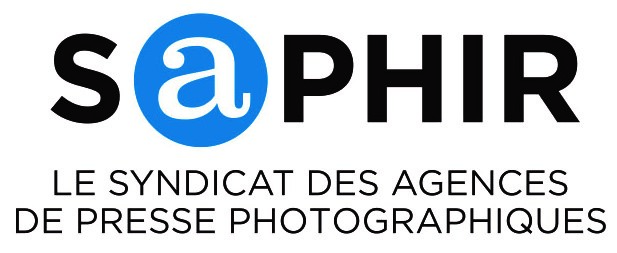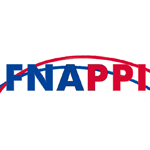Posted on 6/21/2017 by Jim Pickerell
I’ve just returned from the 2017 CEPIC Congress in Berlin. Here are eight of my takeaways from the conference.
1 – A major focus of the first day was a series of four seminars (Google in the EU and the US: Search, Complaints and Licensing ) focusing on issues around Google’s continuing dominance in search. The seminar sessions were supported by ICOMP and the Open Internet Project.
These workshops have become an annual event since 2014. CEPIC, and a range of companies in the European Union, have been fighting to get EU legislative action that would provide image seller with a more equal chance to license their images rather than have them stolen by Internet users.
While all parties have been working very hard on behalf of image creators and seller, they seem to be making little headway. The chances of major changes that would benefit image creators and image sellers seem unlikely in the foreseeable future.
In February 2017, Google rolled out its new Image Search in Germany – to the detriment of the entire picture industry. More than ever, Google’s dominance raises fundamental concerns of fairness and a level playing field. There is little question that Google monopoly position is negatively affecting image rights holders. It it unclear that the EU will be able to do anything to change that.
2 – Of the three major image suppliers (Getty Images, Shutterstock and Adobe), Adobe was certainly the most active at the Congresds. On Friday, they made a major presentation of their newest initiatives and sponsored a presentation by Reuters on Saturday that focused on Adobe’s move into Editorial. The arrangement with Reuters gives them a competitive position with Shutterstock editorial and hopeful beginnings for both of competing with Getty Images Editorial.
Getty Images and Shutterstock did have tables, but there was no indication that they were doing any serious marketing.
3 – In terms of copyright many companies seem to be moving into the business of locating online image uses for agencies and photographers and helping with the legal process of pursuing unauthorized uses.
These organizations include: PixTrakk, Copytrack, Lapixa, ImageRights International and Graphics Detective.
These companies are able to locate most of the online uses of an individual’s images. But, before pursuing infringers they must determine which of the uses might have been legally licensed and which ones weren’t.
For many agencies that have multiple distributors around the world, or who represent images non-exclusively making such a determination is often a very difficult and time consuming process. If the images has been licensed, it is often difficult to determine exactly who it was licensed to and the specific rights granted. It may have been licensed by a design firm on behalf of another client and found on the clients site. The information as to who the end user really is s almost never shared with the image creator.
If the photographer is exclusive with one agency, or licenses all of his images directly with customers it may be a little easier to determine it the use is legal. That photographer will at least know whether he has been paid some for a use. Even then the photographer will have to spend a lot of time checking his or her records in order to tell the lawyers which uses to pursue.
While there can be some very significant recoveries, Jean Favreau of PixTrakk points out that it is very important to not chase every infringement. Only pursue those that are likely to result in a quick and easy settlement, or a very significant settlement. It is very easy to spend more time and energy pursing every possible infringement than the combined total recovery justifies.
One of the most interesting things about infringement chasers is that PicScout, now owned by Getty Images, was not in attendance. Back in 2004 PicScout was the first company to get involved in working with agencies to identify unauthorized online uses. There was no clear answer as to why they weren’t at the Congress.
4 – Meanwhile, when it comes to copyright infringement more and more professional users of images feel they have every right to use anything they find on the Internet for free.
Lynn Bryant of Arcaid Images told me about a recent experience she had when making a presentation at an Architecture Association meeting in the UK. The early presenters were talking about how they promoted their businesses online and how they were able to find the images they needed for these promotions on the Internet.
When it came Lynn’s turn to speak she asked what kind of fees they paid for such uses? This idea was anathema to the audience. They responded, “These are pictures of our buildings. They are on the Internet. Why should we be expected to pay anything to use them on our sites?”
This is a good example of how many in other professions feel about images they find on the Internet. For more than a decade they have been trained to think that way – despite the laws of copyright and the feeling of those of us in the stock photo business. I don’t see any likelihood that this attitude will be turned around – soon or ever.
5 – There was general agreement among everyone I talked to that prices have been falling. The vast majority of the market is controlled by the big three — Getty, Shutterstock and Adobe. Thus, any reverse in the pricing trends would have to come from them and no one expects that to happen.
Those in the technology world keep pointing to the huge growth in usage of photography on the Internet, but none I talked to could point to how that will be translated into much additional growth in stock photo photo sales. Most felt that unit sales are plateauing and growth depends on taking market share from someone else.
6 – There was a lot of interest in video and its potential for growth. Average prices for video clips are higher than prices for still image uses. Given Internet growth, everyone expects more video to be used. But, for the most part video is more expensive to produce and there are a huge number of video clips in the pipeline being prepared for upload. More are sure to be coming soon.
Getty, the largest seller of video clips had some growth in 2016 compare to 2015, but not a significant amount. Sources indicate that Getty’s gross video sales in 2016 were about $84 million. I estimate that there are at least 10 still image sales for every video clip sale and I don’t see any evidence that ratio will change dramatically in the near future.
7 – Some said the future of this industry is for “hobbyist” and distributors needed to look to them for future production.
Some experienced RM photographers working for Getty are earning on average 7% of what they earned 10 years ago per-image-licensed. Some earn a higher average if they are lucky enough to get a few over $1,000 sales, but such sales are very rare and probably represent less than 1% of total sales. The increase in the number of low dollar sales doesn’t make up the difference.
RF photographers who have their images in the iStock Signature collection earn about 3% of what they earned 10 years ago with images in the Getty RF collection. They are making more sales, but not enough to make up the difference.
At these prices professionals can no longer continue to produce. A few professionals with specialist agencies indicated that they are still able to make a volume of sales at high enough prices to justify continued expensive productions of new images. But the number of such professionals is increasingly rare.
8 – As usual there was very little attendance at the Congress from the image creation side of the business except from a few companies that have large production teams. When I first started attending CEPIC more than a decade ago large numbers of individual photographers were also in attendance trying to interview and make contact with individual agencies who might distribute their work. That seems to be gone.
One of great problems with this industry is that there is less and less opportunity for interaction between individual creators and distributors of their work – at least, at events like this.







